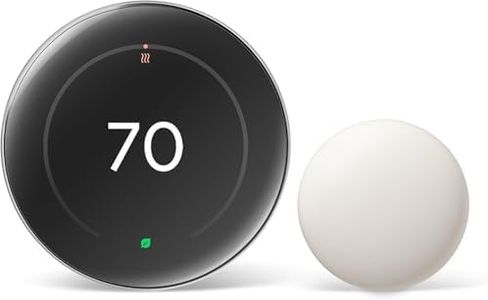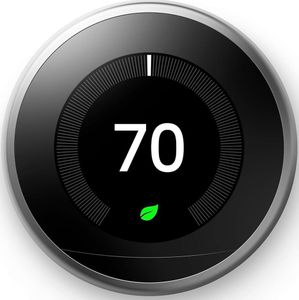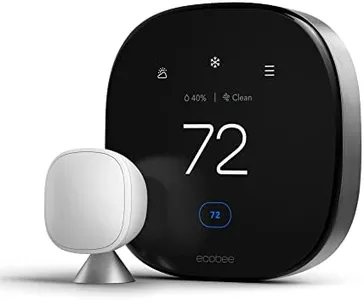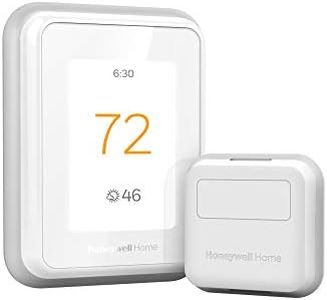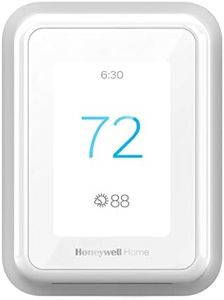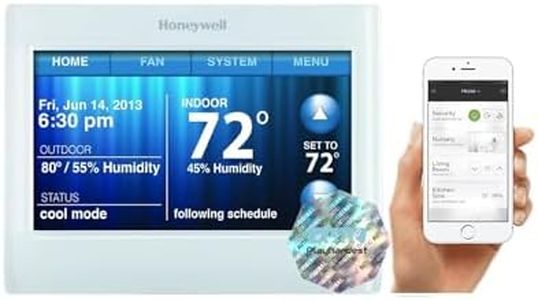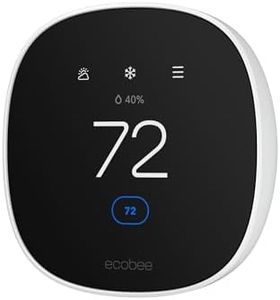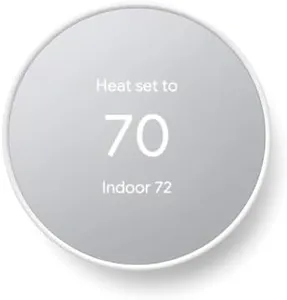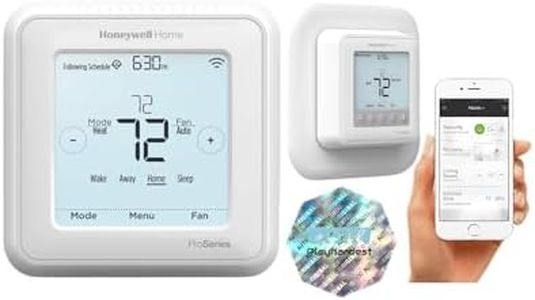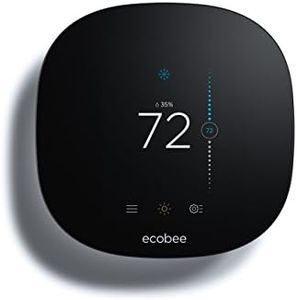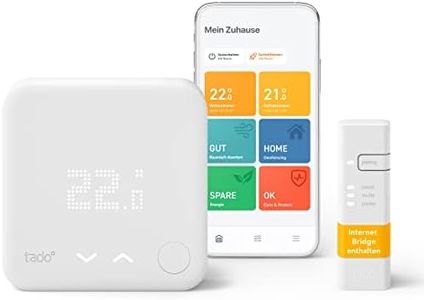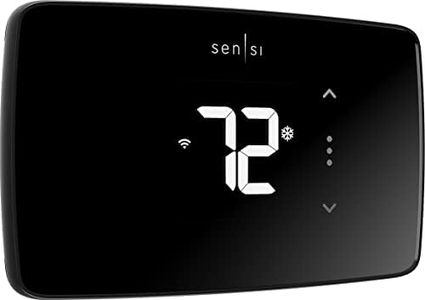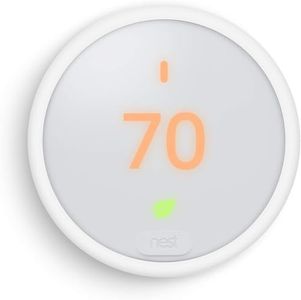We Use CookiesWe use cookies to enhance the security, performance,
functionality and for analytical and promotional activities. By continuing to browse this site you
are agreeing to our privacy policy
10 Best Wi Fi Thermostats
From leading brands and best sellers available on the web.Buying Guide for the Best Wi Fi Thermostats
Choosing a Wi-Fi thermostat can really boost your comfort at home and help you save energy. These smart devices let you control your heating and cooling from your phone or voice assistant, giving you flexibility and convenience. The key to choosing the best Wi-Fi thermostat is to look at your home's heating and cooling system, the features you want, and how comfortable you are with tech. Focus on the essentials that fit your lifestyle: whether it's simplicity or advanced programmability, what matters most is making your daily life easier.CompatibilityCompatibility refers to whether the thermostat will work with your existing heating and cooling system. It's important because not all thermostats work with every type of HVAC setup. Most systems are either single-stage, multi-stage, heat pump, or have extras like humidifiers. When shopping, check your current system details—this information is usually on your furnace or the manual. Some thermostats offer wide compatibility while others are more limited. The right choice depends on matching the thermostat to your home's equipment, so double-check before purchasing.
Smart FeaturesSmart features include things like learning your schedule, occupancy sensing, geofencing, and connecting with other smart home devices. These are important because they allow your thermostat to adjust the temperature automatically for comfort and efficiency. Some thermostats keep it simple with manual scheduling, while others analyze your habits or use GPS tracking from your smartphone. If you like automation and hands-off comfort, go for a model with advanced smart features. If you prefer more control or don't want too much tech, basic programmable functions might be best.
Ease of InstallationEase of installation describes how simple it is to set up the thermostat in your home. Some units are designed for easy, do-it-yourself installation with clear instructions and helpful apps, while others require professional wiring or a common wire (C-wire). If you’re handy and have a straightforward setup, you might prefer an easy-install model. If your wiring is complicated or you’re unsure, choosing a thermostat that comes with professional installation support could save time and headaches.
Control OptionsControl options cover how you interact with your thermostat—from touch screens and physical buttons to mobile apps and voice commands. This is important because it affects convenience and accessibility for your household. Some models focus on a great physical interface, while others are optimized for remote access through your smartphone or work seamlessly with voice assistants like Alexa or Google Assistant. You should choose based on your preferred way of controlling home devices, and consider who else will use it—pick something intuitive for everyone.
Energy ReportingEnergy reporting tracks your heating and cooling usage and sometimes suggests ways to save energy. This is valuable if you’re trying to reduce costs or be more eco-friendly. Reporting can range from basic usage logs to detailed monthly summaries and performance tips. If you're keen on tracking your home's energy patterns, look for models with robust reporting. For those not as interested in analytics, a simpler thermostat will do just fine.
Display and User InterfaceDisplay and user interface refer to how information is shown and how you interact physically with the thermostat. Some have large, color touchscreens while others use simple monochrome displays or even basic dials and buttons. The importance lies in readability and ease of use. If you want something easy to see and operate, especially for older family members, go for a larger, clear screen with intuitive menus. If you want to set it and forget it, a basic interface might be sufficient.
